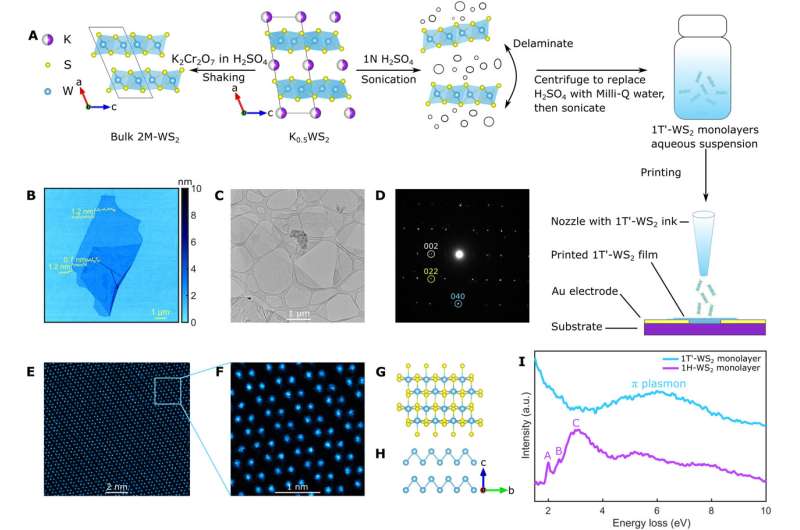March 23, 2023 report
This article has been reviewed according to Science X's editorial process and policies. Editors have highlighted the following attributes while ensuring the content's credibility:
fact-checked
peer-reviewed publication
trusted source
proofread
Using chemical exfoliation to produce superconducting tungsten disulfide ink

A team of chemists, engineers, material scientists and physicists from Princeton University, Rutgers University and the University of Regensburg has developed a chemical exfoliation technique to produce single-molecule-thick tungsten disulfide ink. The group describes their technique in a paper published in the journal Science Advances.
As research continues into the creation of truly useful quantum computers, scientists continue to search for new materials that could support such machines. In this new effort, the research team looked into finding ways to print very cold circuits inside quantum computers using superconducting ink.
The new method involved a material consisting of layers of tungsten disulfide and potassium. The researchers exfoliated the material by dunking it into a sulfuric acid solution. This dissolved the potassium and left behind single-molecule layers of tungsten disulfide. The final step involved rinsing the acid and remnants in it, leaving the layers of tungsten suspended in a tub of water. In this state, the researchers found that the layers of tungsten disulfide could be used as a form of ink that could be printed onto various types of surfaces, such as plastic, silicon or glass. This left a one-molecule-thick coating on the material.
The coating held stable at room temperature without the need for a protective coating for 30 days. Cooling it to 7.3K made the coating superconductive, even after it was left in the open air for a period of time. The research team notes that this suggests that the ink could be carried around without the need for special equipment to a site where it could then be frozen for use as a superconductor. They further suggest that due to the simplicity of the process, it should be quite easy to industrialize it.
They conclude that the ink could be used in quantum computers or MRI machines where parts would already be chilled to the necessary temperatures. The team next plans to test the possibility of using a similar process to create superconductive coatings at higher temperatures.
More information: Xiaoyu Song et al, Synthesis of an aqueous, air-stable, superconducting 1T′-WS 2 monolayer ink, Science Advances (2023). DOI: 10.1126/sciadv.add6167
Journal information: Science Advances
© 2023 Science X Network


















